#mark twain steamboat
Explore tagged Tumblr posts
Text

#disneyland#50's#vintage#mark twain steamboat#mid 50's#california#anaheim#rivers of america#disney#1955
13 notes
·
View notes
Text

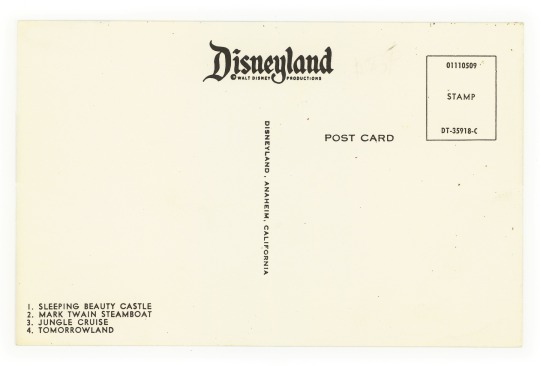
Postcard caption:
Sleeping Beauty Castle
Mark Twain Steamboat
Jungle Cruise
Tomorrowland
#disneyland#postcard#sleeping beauty castle#mark twain steamboat#jungle cruise#tomorrowland#antiques#vintage#disney#walt disney#california
2 notes
·
View notes
Text
#disneyland#disney#walt disney#the carpetbagger#adam the woo#mark twain#steamboat#birthday#jenn#anaheim california#pressed#penny
1 note
·
View note
Text
if I was good at art I’d make an NE MO miku, specifically for the tourist trap I live in
#she’d be in front of a steamboat with a mark twain plushie#and an Indiana bat plushie :3#wait…. steamboat captain miku…..
0 notes
Text


Beautifully restored 1877 Victorian with a mansard roof in St. Louis, MO. 5bds, 3ba, $960K. Isn't this a pretty street? This home was the only one built by the steamboat Captain Horace Bixby (mentor of Mark Twain).
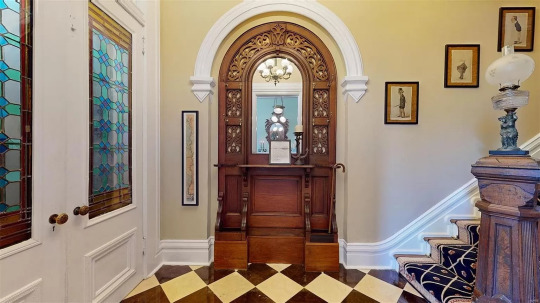

This entrance hall. What a wonderful built-in. It holds walking canes. The newel post is stunning and the lamp is kerosene- how original is that? I like the checkered floor- I think it makes it pop more than wood.
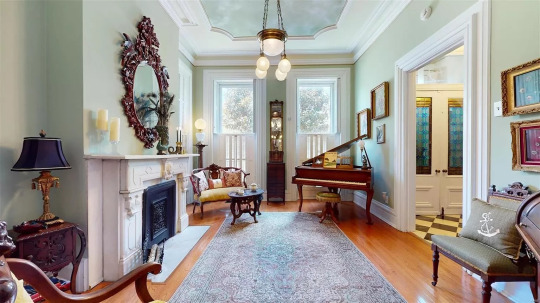
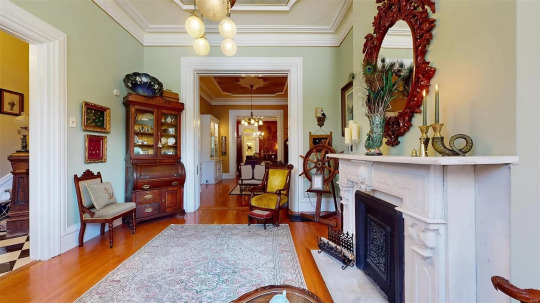
The reception room is lovely. You'll see that they have some ship antiques around, which is a great idea since it was a steamboat captain's house.
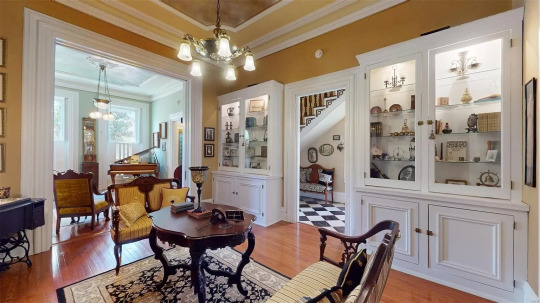

What a great fireplace in the sitting room. Even though the cabinets don't look that old, I think that they may be built-ins.

Beautifully done dining room. This home is so tastefully appointed.

Butler's pantry pass-thru to the kitchen.


The kitchen redo is stunning.

They must be leaving this piece if they show the incredible detail.

This is such a lovely bedroom.
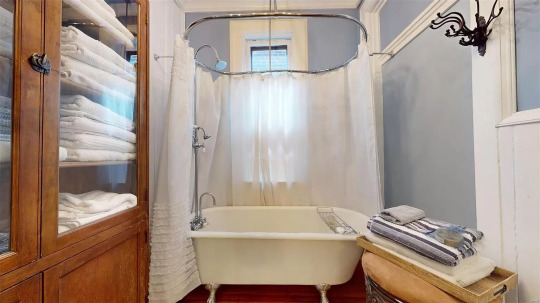
Perfect vintage bath remodel.

Note the little laundry chute on the 2nd fl. They also kept the steep stairs intact.



This bedroom has stairs up to a beautiful terrace.

This room has a large bathroom/dressing room.


Yard is small, but so beautifully done.

But, that's not all the outdoor space. The spiral stairs go to a rooftop deck.
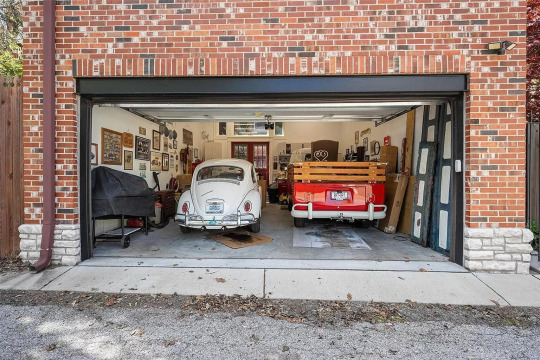
There is also a 2 car garage around the block.
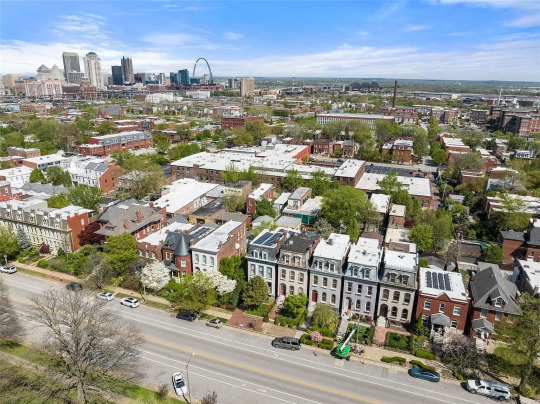
Lovely neighborhood of gorgeous homes.
https://www.zillow.com/homedetails/1532-Mississippi-Ave-Saint-Louis-MO-63104/2945672_zpid/?
205 notes
·
View notes
Text
@fair-kid made me the LOVELIEST secret santa gift, please read!!!!
9 notes
·
View notes
Text

Mark Twain by Ron Chernow
Pulitzer Prize-winning biographer Ron Chernow illuminates the full, fascinating, and complex life of the writer long celebrated as the father of American literature, Mark Twain
Before he was Mark Twain, he was Samuel Langhorne Clemens. Born in 1835, the man who would become America’s first, and most influential, literary celebrity spent his childhood dreaming of piloting steamboats on the Mississippi. But when the Civil War interrupted his career on the river, the young Twain went west to the Nevada Territory and accepted a job at the local newspaper, writing dispatches that attracted attention for their brashness and humor. It wasn’t long until the former steamboat pilot from Missouri was recognized across the country for his literary brilliance, writing under a pen name that he would immortalize.
Ron Chernow, the highly lauded biographer of Alexander Hamilton, George Washington, and Ulysses S. Grant, brings his considerable powers to bear on America’s first, and most influential, literary celebrity, Mark Twain. Born Samuel Langhorne Clemens in 1835, under Halley’s Comet, the rambunctious Twain was an early teller of tall tales. He left his home in Missouri at an early age, piloted steamboats on the Mississippi, and arrived in the Nevada Territory during the silver-mining boom. Before long, he had accepted a job at the local newspaper, where he barged into vigorous discourse and debate, hoaxes and hijinks. After moving to San Francisco, he published stories that attracted national attention for their brashness and humor, writing under a pen name soon to be immortalized.
Chernow draws a richly nuanced portrait of the man who shamelessly sought fame and fortune and crafted his celebrity persona with meticulous care. Twain eventually settled with his wife and three daughters in Hartford, where he wrote some of his most well-known works, The Adventures of Tom Sawyer, Life on the Mississippi, and Adventures of Huckleberry Finn, earning him further acclaim. He threw himself into American politics, emerging as the nation’s most notable pundit. While his talents as a writer and speaker flourished, his madcap business ventures eventually forced him into bankruptcy; to economize, Twain and his family spent nine eventful years in exile in Europe. He suffered the death of his wife and two daughters, and the last stage of his life was marked by heartache, political crusades, and eccentric behavior that sometimes obscured darker forces at play.
Drawing on Twain’s bountiful archives, including his fifty notebooks, thousands of letters, and hundreds of unpublished manuscripts, Chernow masterfully captures a man whose career reflected the country’s westward expansion, industrialization, and foreign wars. No other white author of his generation grappled so fully with the legacy of slavery after the Civil War or showed such keen interest in African American culture. Today, more than one hundred years after his death, Twain’s writing continues to be read, debated, and quoted. In this brilliant work of scholarship, a moving tribute to the writer’s talent and humanity, Chernow reveals the magnificent and often maddening life of one of the most original characters in American history.
Daily inspiration. Discover more photos at Just for Books…?
5 notes
·
View notes
Note
For the writing ask game, 7 and 18?
7. what books have shaped the way you think about writing the most? why?
I think I'm gonna go with The Shuttle by Frances Hodgson Burnett. I read it in school (homeschool) and had an alotted half hour to read at the end of my school day, and was allowed to go overtime with my reading if I wanted. On the last day I was reading it, I read for three hours, because I had to get to the end. I needed to finish. My goal in writing, especially with my actual novels, is to give that experience to someone else— to write a story that they lose themselves in, a plot that picks up so they can't put the book down, a fictional reality that makes them lose touch with the real one.
18. how do what you look for in your own writing vs someone else’s coincide? how does your writing influence your reading?
In my own writing, I tend to look for all the typos, all the errors, all the mistakes. I look for weak verbiage so I can fix it. The inherent tragedy of this is my scrutinies carry over to my reading. My careful editor's eye casts its gaze across all the words I consume. The cost of making myself a better author is it creates a bias towards perfection in the works of other imperfect authors. I struggle to see the beauty in others' stories because I've trained myself to look for everything wrong.
Perhaps Mark Twain said it best in "Two Ways of Seeing a River," in which he recounts a beautiful sunset he saw in his early days on the riverboats, which at the time filled him with awe and wonder, but now that he had the experience of a professional, he would only pick apart the meaning of it all, what such a scene meant for the condition of the water, and the river, and the air, and how that would affect his journey, and how he'd dismiss the beauty entirely. He concludes with this:
"No, the romance and the beauty were all gone from the river. All the value any feature of it had for me now was the amount of usefulness it could furnish toward compassing the safe piloting of a steamboat. Since those days, I have pitied doctors from my heart. What does the lovely flush in a beauty's cheek mean to a doctor but a "break" that ripples above some deadly disease? Are not all her visible charms sown thick with what are to him the signs and symbols of hidden decay? Does he ever see her beauty at all, or doesn't he simply view her professionally, and comment upon her unwholesome condition all to himself? And doesn't he sometimes wonder whether he has gained most or lost most by learning his trade?"
MARK TWAIN, 1883
I, too, sometimes wonder, whether I have gained most or lost most by learning my trade.
writing ask game
3 notes
·
View notes
Text

Sheriff Jeremiah A. Brown (November 14, 1841 – March 28, 1913) was a politician and civil rights activist in Cleveland. He worked on steamboats with Mark Twain. He moved to Cleveland, where he was elected to the Ohio House of Representatives, he played an important role in fighting Black laws, supporting education, and working for the civil rights of Ohio’s African Americans.
He was the first African American to receive a political appointment in Cuyahoga County, the first to serve as a deputy sheriff in Ohio, and the second to be elected to the Ohio state legislature.
Known as “Jere”, he was born in Pittsburgh, Pennsylvania. He was the oldest child of six children of Thomas A. and Frances J. Brown. His sister, Hallie Quinn Brown, was a noted educator and civil rights activist.
He apprenticed himself to work as a carpenter and joiner. Many employees quit when he joined the shop, unwilling to work with a Black person. He attended Avery College. The family moved to Chatham, Ontario. He married Mary A. Wheeler (1864-1904).
His first position was as bailiff of the county probate court, followed by deputy sheriff and county prison turnkey. He became clerk of the City Boards of Equalization and Revision and a letter carrier for the post office. He was involved in numerous state and national conventions of colored people.
He became a member of the Ohio State Republican Party executive committee. He was made US Customs Inspector. He was appointed clerk in the Internal Revenue Bureau, he was in charge of the office of immigrant inspector. He held several appointments including deputy in the state insurance commissioner’s office.
He was a member of the Carpenters’ and Joiners’ Union of Cleveland. He opposed segregated labor unions. He was a prominent Mason and was a Grand Master of Prince Hall Masonry. He served as a Trustee of Wilberforce University. He was a member of the Congressional Club of Cleveland. He was raised in the AME church and was a member of the Mt. Zion Congregational Church. #africanhistory365 #africanexcellence
3 notes
·
View notes
Text
Disney Dreamland - Part 1: World Galleria
I posted about my idea of a Mysteryland a while back and decided to finally post the rest of my ideas for my personal Disney Park (nicknamed Disney Dreamland; may change the name later, who knows). This outline is a mix of ideas and random commentary related to each idea (I tend to blab a lot in my writing. Sorry in advance). Some ideas are half-baked as I only have an idea how I want them to look and feel rather than function, other ideas are intentionally left vague because they are dependent on experts on the subjects (which I am not). Also, I had trouble coming up with nice-sounding names, so that's why you’ll see a lot of names that are just basic descriptions in quotation marks. Would love some feedback wherever possible!
A bit of background, I originally envisioned this park as a Disneyland in New York (it's one of my favorite self-indulgent daydreams), and that led to my park being a sort of homage to the 1964/1965 New York World's Fair by featuring some iteration of all four of the attractions that debuted there, as well as my version of Main Street being a sort of mini World’s Fair.
Shout-out to @disneylanddilettante , I was inspired to write this after reading her ideal version of Disneyland.

World Galleria
My version of Main Street would be under a lovely glass roof to shield from the weather, and resemble a Victorian arcade. Inspired by Tokyo’s World Bazaar (their equivalent of Main Street), and in homage to similar places throughout Europe’s history, such as The Great Exhibition of 1851, Passage des Panoramas in Paris, Galleria Vittorio Emanuele II in Italy, etc.
The architecture would be mostly Victorian with a bit of Turn of the 20th Century. To help carry the theme of “World’s Fair”, international restaurants would be featured here; their building exteriors would follow the Victorian look, but their signage, window displays, and interiors would fully reflect their respective cultures (for example, see Restaurant Hokusai in Tokyo’s World Bazaar).
The entire place would have plenty of ventilation, especially in the summer, to prevent it from feeling like a greenhouse. To help traffic flow, the street would have crossroad branches in the middle like Tokyo does, leading out into Adventureland on the left, and Discoveryland on the right. The parade does not run down this route (more on that later). This allows the center crossroads space to have special decorations for seasonal events, again just like Tokyo does.
The entire avenue would have accessible second stories to make space for everything. I would also love to have at least one little alcove or mini-courtyard somewhere to relax, containing a small garden with a decorative fountain.
Disney Dreamland Railroad main station: Victorian style with partial glass ceilings. Other stations will be in each of the five lands, all appropriately themed, and with dioramas in the tunnels teasing each land’s theme / attractions. I also think it would be really neat if the park’s entrance ticket booths were underneath this station.
Great Moments in Storytelling: Successor to Great Moments with Mr. Lincoln, one of the four New York World’s Fair attractions. Due to personal reasons, I’m not entirely comfortable making any President, past or present, shown as a celebrity or a friendly buddy. So I decided, how about famous authors instead? Perhaps Shakespeare, Charles Dickens, Mark Twain, or all three and more? There would also be a narrative or discussion of some kind, so it’s not just them spouting random popular quotes from their works.
“Mini Disneyland model” : The models of the Storybook Land Canal Boats are a very neat idea, but I personally prefer taking my time to see models up close, not in the blink of an eye from afar. I think it would be really cool to have a scale model of the original Disneyland as an homage, and a learning exhibit.
“Galleria Cinema”: Showcases old Disney shorts, including Steamboat Willie, Oswald the Lucky Rabbit, and the Alice Comedies. Maybe on special occasions it could even showcase foreign films, like The Red Balloon.
Penny Arcade: Mutoscopes and other coin-operated games.
World Emporium shop.
"Snack tin shop": In Asia the parks sell snacks in these absolutely GORGEOUS decorative tins. This shop could sell a variety of international snacks with unique Disney art themed to each region / culture on the tin.
Wishing You Were Here: Stationary shop and post office. Send postcards to your loved ones. Yearly calendar with exclusive artwork available here (Tokyo’s calendar artwork is ASTOUNDING).
For restaurants, I would include restaurants with the following cuisines:
Japanese, as a nod to Tokyo Disney Resort (French and Chinese cuisine will be elsewhere in the park).
Norwegian, Moroccan, and Canadian, as a nod to the remaining countries of EPCOT that won’t have restaurants elsewhere in the park.
Thai, as a nod to Amphibia without specifically being IP themed, though there could be a few hidden references to the show in the decor and menu.
Greek. Interior could be themed to mythology and have a few hidden references in the decor to the animated Hercules.
There won’t be any American cuisine in this area as they can already be found elsewhere in the park.

‘‘ it’s a small world ’’
One of the four New York World’s Fair attractions. In place of the classic Disney castle, here I put "it’s a small world" as my park’s icon. If you think about it, Small World is in its own way a kind of castle, it certainly looks like one, but also a small city. I think it neatly adds on to the theming of World Galleria. Shout-out to @pureimagineering , who also imagined Small World as a park icon, but for different reasons.
This version’s facade would be castle-sized. Color scheme could be either pastels, or white with various shades of blue, and touches of gold. Entrance and queue would be on the back of the building to leave the front free for live entertainment, and nighttime fireworks and projection shows. The main central garden plaza hub would at least be the size of Tokyo’s, but nowhere near as big as Shanghai's, who only gets away with it because their castle is so dang huge. The hub would be surrounded by a river making it an island, much like Orlando’s hub. Features include a structure inspired by Tower of the Four Winds, and fun topiaries. For my park, the parade would follow a similar route to Tokyo and Shanghai, originating from the west and wrapping around the central hub before exiting eastward.
There would also be a back garden plaza behind the ride building, with plenty of topiaries, flower gardens, and a little river running through the garden with lovely bridges crossing over it. This area transitions into Fantasyland. There would be an international buffet restaurant and a gift shop placed on the second floor of Small World, above the ride, with the entrance also on the back of the building. The classic clock tower would of course be in front, but there’d also be a smaller version in the back for the people in the queue and the restaurant.
A World of Tastes: International buffet. Interior architecture would resemble the finale room of the ride. Buffet would feature a little bit of something from every single country featured in the ride, with emphasis on cuisine not already featured anywhere else in the park.
‘‘it’s a small world’’ Toy Shop: Does anyone remember the singing Small World Animators’ Dolls that Disney Store released back in 2013 / 2014? I would love to have this store re-release them, as well as mini playset versions (non-singing). The store can of course also sell other Disney character plush, and plush keychains in unique outfits like the ones sold in Tokyo.
The Ride Itself:
I definitely want to have a queue designed by Joey Chou like the one he did for Tokyo’s version’s 2018 renovation. He is pretty much this generation’s Mary Blair. I just love all the kinetic sculptures, the delightful murals, and star-shaped lights dangling from the ceiling. It’s all so adorable and colorful!
For the ride itself, there would be more countries added. For example, Europe could have a few more Eastern European / Slavic countries at the end to transition into Asia. Similar to Hong Kong’s version, the Asia room would also have more dolls and scenes, but rearranged so that the Middle East is in the back to better flow into the Africa room. I would also definitely add the Mandarin and Cantonese versions of the song to Asia’s audio. It would be great if there were more countries represented in Africa, or at least a portion added for the savanna, a marketplace scene, and Mount Kilimanjaro. Maybe also include audio of the song in Swahili and Zulu. I’m not opposed to a North America room, so long as there is decent representation of various Native American tribes, and Canada.
For the ride music, I’d love a version that closely resembled the soundtrack that Paris used to have. I think the instrumentation and vocals from that version is simply top tier joy-inducing. For the finale room I’d use the EPIC orchestral rendition from the Small World finale unit in Tokyo’s Electrical Parade Dreamlights.
While I myself have no problems with the dolls, I am willing for the dolls’ faces to be redesigned to be slightly more cartoony to reduce any uncanny valley.
Controversial opinion, I personally have little issue with most of the Disney character cameos that are in the Hong Kong, California, and Tokyo versions of the ride. Since most of the human characters are portrayed in doll form, and the non-humans match the stylized look of the animals throughout the ride, they tend to blend in rather well and make for a fun Easter Egg game. I will admit, some characters stand out too much, like the Toy Story gang, or had unnecessarily extravagant sets added just for their sake, like Rapunzel who had her whole tower added in Tokyo. As a middle ground, for my version of Small World, I narrowed down the Disney cameos to only 4 specific groups in homage to the movies that Mary Blair had a heavy influence on.
Alice in Wonderland: I’m a little biased as Lewis Carroll’s Alice is my favorite book. Alice and the White Rabbit fit in well at their current location next to the UK chessboard, and are fine to leave as is.
Peter Pan: Peter and TinkerBell flying above the audience works just fine as they are decently hidden out of view most of the time. While I think Wendy sitting on the moon is a very cute image, I’ll leave her out to keep the cameos to a minimum.
Cinderella: The current versions stand out a little too much, especially Hong Kong’s where she and Prince Charming have the castle added behind them. For my version, I would only have Gus and Jaq tucked away on the Eiffel Tower (where Mary’s cameo is hanging out), but I would also have the Eiffel Tower rendered in white, blue, and silver in the style of Cinderella Castle.
The Three Caballeros: While Donald, José, and Panchito stand out the most of the four cameos I’ve picked, they were part of a genuine cultural movement as a result of the Good Neighbor policy, not to mention warmly received by Latin America, so they’re perfectly in the spirit of Small World, and I think they’re fine to leave as is.
Starting in the hub, the five themed genre lands of the park, going clockwise, are:
Adventureland
Mysteryland
Fantasyland
Create-It-Land
Discoveryland
#disney parks#disney dreamland#armchair imagineering#main street usa#it's a small world#theme park design
24 notes
·
View notes
Text
ECU High - Vince's Attitude
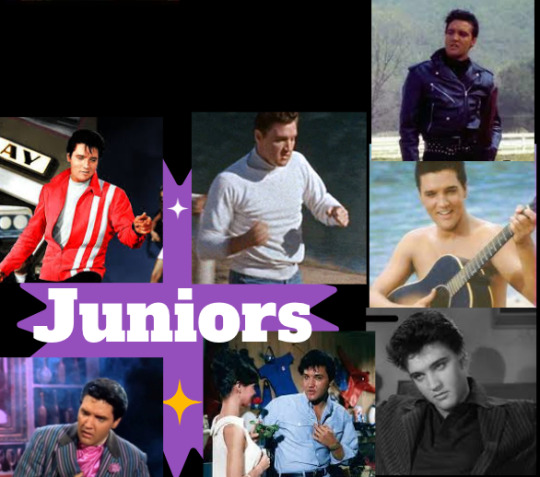
A Lincoln Town Car drives up to ECU High's front door.
"Jeeves stop here. I wanna get out now." Vince orders.
"Yes, Master Everett," his chauffeur says as he stops.
Vince gets out of the car with his Ralph Lauren backpack wearing high end clothes.
"You better be back at 3:15 or else." he says as he closes the door.
Jeeves drives away as Vince walks into the school.
"What's up poors!" Vince yells as a flex.
"Ah shut up, Vince!" some of the boys yell as he walks by.
"And a good morning to you too Charlie, Steve and Walter. I know you're all so jealous but oh well. We can't all appear on MTV and land a huge recording contract." Vince starts to laugh and walks away.
Walter has to hold Charlie and Steve back. "He ain't worth it. If there's any justice in this world, he'll get his one day."
Vince keeps laughing as he walks to his locker.
"Vince you really need to end this state of hubris and narcissism."
Vince rolls his eyes as he opens his locker. "Ah what do you know Scotty boy. You ain't got much room to talk with that silver spoon shoved in your mouth. Beat it."
Scott just sighs and walks away. Vince turns to his left.
"What ya got something to say to me Chad?"
Chad just chuckles. "You know, Vince. I never thought you'd be the kinda kid who becomes a complete ass just because he made a million bucks. Didn't anybody tell ya to be nice to the people on the way up? If they did then you'd know that you're only gonna run into them on the way down. Keep it up and -"
"Ah shut up!" Vince interrupts.
Chad just shrugs as if to say "Can't say I didn't warn you." and walks away.
Vince groans in annoyance as he grabs his books to put away. He looks at his schedule and finds that he has American Literature as his first class. When he walks into the classroom he immediately gets annoyed.
A teacher is talking with her student about a project. "What did you want me to help you with, Johnny?"
"Ms. Xana, Ah'm tryna write a story about a man who performs on riverboats in the 1860s. Where should Ah look?" he asks sitting at a desk.
She thinks as she goes through some books at her desk. "I think I have just the book for you, Johnny."
She pulls out "Life on the Mississippi" and hands it to him. "This is a memoir by Mark Twain. He used to work as a steamboat pilot before the Civil War. This should help you get started with your research."
Johnny takes the book smiling as Vince rolls his eyes. "Are ya done with the theatrics Johnny? Nobody reads your damn plays."
Ms. Xana gasps. "Vince watch your language. I won't have that type of talk in my classroom."
Vince scoffs as he sits down and waits for the bell to ring so class can start. His mind starts to wander and thoughts become sour.
"Why'd my stupid parents decide to keep me enrolled at this stupid school with these stupid kids and naggy ass teachers? I'd rather go to a private school or drop out all together."
Tag list: @vintagepresley, @jaqueline19997, @presley72elvis, @vintagegirl50s60s70s80s, @j-v-9-2, @lawdymissclawdy68, @almightybigbrain, @arrolyn1114, @tupelomiss, @thetaoofzoe, @mydarlingelvis, @phil2135561 @just-another-boring-bisexual, @leopardandstuds, @ellie-24, @heart-of-ep, @thatbanditqueen, @gayforelvis, @be-my-ally, @alienelvisobsession, @mercsandmonsters, @ashtag6887, @whitepontiac, @richardslady121, @aliengoth3, @ash-omalley, @eptodaytommorwforever, @kendralavon7, @thehillbillycat, @melaninpvssypoppin, @wildhorseinkansas, @pinkcaddyconfessions, @comebackep, and @miniaturerunawaykid,.
AN: Also shoutout to @xanatenshi as the literature teacher. I hope I did you well.
#ecu high#vince everett#elvis fanfiction#elvis fanfic#were critics wrong for thinking vince was just a jerk? evidence suggests no
14 notes
·
View notes
Text
Star Trek: Lower Decks Season 4 Spoiler-Filled Review
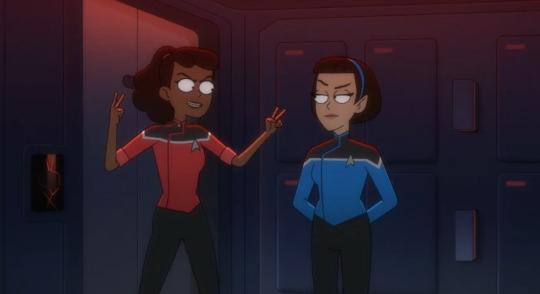
Star Trek: Lower Decks is a mature animation which combines elements of the adventure, comedy, and sci-fi genres. Series creator Mike McMahan is known as a co-creator of Solar Opposites, a producer on Rick and Morty and as a consulting producer on Star Trek: Strange New Worlds. This is the ninth series in the Star Trek franchise and second Star Trek animated series after Star Trek: The Animated Series ended in 1974.
Reprinted from Pop Culture Maniacs and Wayback Machine. This was the fifty-sixth article I wrote for Pop Culture Maniacs. This post was originally published on November 30, 2023. PCM editor Jean Henegan she said she added some content "since I'm a massive Trek nerd/fan, I added a bit of context around some of the things you pointed out...and cleaned up a couple of things that weren't quite accurate...Nice piece, overall." I have incorporated those additions here. Most of the text is the same as what I submitted on November 28th.
This animated series, which has aired for three seasons, takes a different tact than previous Star Trek series. It focuses on lower-ranked officers who engage in menial labor, known as lower deckers. Others are supporting characters. Star Trek: Lower Decks focuses on Starfleet, the military and exploration division of the United Federation of Planets, in the 24th century. It is tasked with establishing contact with races across the galaxy using a ship no one cares about: the USS Cerritos.
Four lower deckers are protagonists: Beckett Mariner, Brad Boimler, D’Vana Tendi, and Sam Rutherford. They are voiced by Tawny Newsome, Jack Quaid, Noël Wells, and Eugene Cordero. Four others are recurring characters: captain of the Cerritos (Carol Freeman), first officer Jack Ransom, tactical officer Shaxs, and head medical doctor T’Ana. Dawnn Lewis, Jerry O’Connell, Fred Tatasciore, and Gillian Vigman voice these characters. All are well-known voice actors.
This series stands out because of its animation style, comedy, plot, and characters. Mariner is a big part of this. Her romantic relationships became a big part of the series, especially in the third season, when she is dating Jennifer Sh'reyan (voiced by Lauren Lapkus). Like actual relationships, they don't stay together, partially because Jennifer does not stand by her. She abandons Mariner when many on the Cerritos incorrectly think she is a traitor. Mariner is bisexual or pansexual. Previously, she dated Steve Levy. She tells Tendi, in a season two episode, that she dated "bad boys, bad girls, bad gender non-binary babes, [and] ruthless alien masterminds." She dated Amina Ramsey (voiced by Toks Olagundoye) while at Starfleet Academy. McMahan stated that "every Starfleet officer is probably at the baseline bisexual" and that there was no intention for "anybody to be strictly heteronormative or straight or cis."
Unfortunately, this is rarely explored in Star Trek: Lower Decks season 4. There are some romantic vibes between Mariner and T’Lyn (voiced by Gabrielle Ruiz), a fellow crewmember on the Cerritos (who also happens to be Vulcan), in the fourth episode. They care for each other (as much as a Vulcan can care, with their repressed emotions), especially after knives keep stabbing Mariner during the episode. In the episode after, T’Lyn calms down Mariner’s emotions after her fever causes everyone’s emotions on the Cerritos to go out of control. In another episode, Mariner enjoys being kissed by a guy. Otherwise, her development during the season revolves around her promotion to a higher rank and ramifications of that decision. Although she is still part of “lower decks,” she is now a junior grade lieutenant, which makes her uneasy.
Boimler and Rutherford get closer, especially after the fourth episode. They even solve a disagreement by dressing up as Mark Twain and talking on a simulated steamboat. Both struggle with their promotions, although in different ways than Mariner. For instance, Boimler gets his first mission as commander and attempts to do everything himself. With some prodding from T’Lyn, he ends up sacrificing himself to save everyone and is later brought back to life. Rutherford also tries to find his place on the ship following his promotion. The closeness between Boimler and Rutherford has led some to ship them together. After all, in the eighth episode, Boimler doesn’t mind taking off his pants when Rutherford asks. Presently, there are less than 20 fics shipping them. Comparably, there’s over 120 fics for the Marinler ship (Mariner and Boimler). The latter has a small chance of canonization as compared to the Rutherford/Boimler ship.
Otherwise, there are wild plotlines, whether about Betazoid “diplomats” (actually undercover intelligence officers) with a hidden agenda who almost bring the Cerritos into the neutral zone where Romulans await battle, a fake marriage between Tendi and Rutherford, or megalomaniacal A.I. – known as Badgey – trying to get revenge. In the case of the latter, the A.I. comes out of the Daystrom Institute on Earth, returning following its initial appearance in season two. In the time between the seasons, it was imprisoned in a penitentiary holding other A.I. of a similar nature. His plans are foiled when he realizes that ultimate power is too much. The plans of two A.I., Peanut Hamper and Aegus, also fail after they realize that killing others isn’t worth it. Both commit to reforming their selves, so they aren’t evil anymore.
The depiction of A.I. in Star Trek: Lower Decks is somewhat similar to the rogue A.I. in Futurama's Season 8 Part One, or near-planet-destroyer Light Hope in She-Ra and the Princesses of Power. It differs from the mixed representation in Moon Girl and Devil Dinosaur and Cleopatra in Space, or more positive depictions in My Dad the Bounty Hunter, Kizuna no Allele, and Supa Team 4. This matters considering social media rumblings that some actors will not vote for the recent contract between SAG-AFTRA and the Hollywood studios due to reportedly subpar A.I. provisions [Note: The previous line was removed from the PCM version.]
Throuhgout the season, there are also scenes with spoken poetry, a bar fight (started by Mariner, naturally), and an instance of Boimler getting addicted to a Ferengi television series. There’s even a funny episode where everyone recounts their experiences about being stuck in a cave with different Starfleet officers. However, it’s the journey that Mariner takes over the course of the season that truly hits home as the season comes to a close. Following her promotion Mariner struggles to be a leader, desperate to keep bucking command. How can you be rebellious against the command structure when you are part of it? She asks herself this question, trying to determine what her purpose within Starfleet is. It isn’t until the close of the season that she truly understands who she is and why she is so hesitant to take on more responsibility.
In that episode, Captain Freeman is worried about Mariner. She’s unsure why Mariner is taking risks and trying to get herself killed. She orders Mariner’s friends to distract her. This backfires. Mariner, along with T’Lyn, Tendi, and Boimler, all teleport to a planet surface before their ship is destroyed. When they admit they are worried about her, and reveal the Captain’s order, she is unhappy. She agrees to stay with them until she slips out during the night. In the process, she bonds with a Klingon, who tells her what no one has stated directly: she’s at war with herself.
youtube
This is only part of Mariner’s attempted self-examination. It is akin to Yor Forger asking herself why she is an assassin in episode 33 of Spy x Family, lingering doubts of Teru Momijiyama / Shy in Shy about her reasons for being a hero, or Sora Harewata-ru / Cure Sky wondering why she hesitates to fight the Undergu empire in episode 42 of Soaring Sky! Pretty Cure. Mariner reveals she is partially in Starfleet to honor Sito, a friend from her time at Starfleet Academy who died a senseless death several years earlier, which makes her continue to question Starfleet’s mission. She admits that while she doesn’t hate Starfleet, she tried to get out of a promotion. She believes Starfleet should solve the puzzles of life, not start wars (which could violate the Prime Directive). As she tells the Klingon, she doesn’t want to send her friends off to die. She wants to be an ensign and nothing more.
Ma’ah (voiced by Jon Curry), the Klingon, suggests that she honor her friend, slay her enemies, and study to be better. In response, she hugs him, rather than fighting him, and says they should work together. The episode hints at her future leadership, possibly in Star Trek: Lower Decks Season 5. She rallies everyone together in a rousing speech. Unfortunately, she is kidnapped by “Nicholas” Nick Locarno (who, like Sito, previously appeared in live action in Star Trek: The Next Generation and were once again portrayed – in voice over – by their live action actors Robert Duncan McNeil – who also starred on Star Trek: Voyager – and Shannon Fill), who beams her up into a mysterious ship – a ship that has been “destroying” various species’ ships throughout the season. Thanks to her efforts, Boimler, T’Lyn, and Tendi, along with new allies, destroy a Klingon warbird. They are disappointed that Mariner isn’t aboard.
The Season 4 finale ends with a bang, as it turns out that ships “destroyed” across the galaxy have joined the renegade Nova Fleet/Squadron. It resembles the rag-tag rebel fleet in Star Wars Rebels. There’s a major difference: Nick is willing to engage in terrorism, i.e., threat or use of violence to cause panic or intimidate, especially as a method to affect political conduct, as defined in the Third Pocket Edition of Black’s Law Dictionary. Mariner easily stops this. She calls out Nick as selfish and brainless, then steals a genesis device, which can destroy planets.
Captain Freeman shows her dedication to her daughter, and to the well-being of her crew. She goes to extreme lengths to rescue Mariner. After a failed contest on her homeworld of Orion, Tendi agrees to work for her pirate sister, D’Erika (voiced by Ariel Winter), so they can get a battleship. They use the decrepit warship to smash through the barrier. It creates a hole big enough for the captain’s yacht to enter. In the process, they save Mariner. Nick is left on her ship after he tries to kill her and activates the genesis device. In a moment of clever dark humor, Nick is destroyed by the device since he can’t pay the money needed to deactivate it (since it is a Ferengi model, of course).
The episode ends with Captain Freeman not court-martialed, T’Lyn refusing to return to her previous ship, and the four protagonists come together for a party in the mess hall. While they party for a short bit, this soon ends, as Tendi feels obligated to fulfill her end of the bargain she made with D’Erika: she must return to a life of piracy alongside D’Erika. Although this depresses Rutherford, neither he, Boimler nor Mariner, stop her from leaving. Tendi prepares herself for what comes next. Undoubtedly, her story will be expanded in Star Trek: Lower Decks fifth season, which was in production as of March.
As noted earlier, queer representation was lacking in this season, as opposed to previous ones. In the past, I’ve written that the ship engineer, Andy Billups (voiced by Paul Scheer), was possibly asexual. A recent post on treksphere makes the same claims. It argues that Tendi is aromantic, Billups is an asexual icon, and points to possible asexual vibes from Spock, Data, and Odo in the Star Trek franchise – although all three characters have relationships with women at various points in their stories. Such claims are only headcanons, similar to those who believed that Page in Tron: Uprising was asexual. There are no asexual characters in the Star Trek universe, to my knowledge. As such, having a canon asexual character in Star Trek: Lower Decks, outward in their identity like Todd Chavez in Bojack Horseman, would be great.
Asexual representation in animation, and in popular culture, is slim. While Alastor in Hazbin Hotel, Lilith Clawthorne in The Owl House, Peridot in Steven Universe, or Perry the Platypus in Phineas and Ferb, are asexual, they were confirmed off-screen. The same is the case for Spongebob Squarepants and Percival "Percy" King in Epithet Erased. Some have stated that Seiji Maki in Bloom Into You and Shōko Tanimoto in The Case Files of Jeweler Richard are asexual. In a previous review, I noted this was the case for Hime Shiraki in Yuri is My Job!. I've seen social media chatter about the manga which comes to a similar conclusion.
Hopefully, Star Trek: Lower Decks fifth season expands on Mariner‘s personal relationships and her identity, and that of the other protagonists. Undoubtedly, it will retain its mature comedy and quirkiness. All the while the characters will be thrown into conflict-prone situations, a breeding ground for trauma. This is not unique. There are multiple series airing this fall featuring characters in tense and stressful situations, sometimes involving murder of human beings. This includes certain The Vexations of a Shut-In Vampire Princess and Spy x Family episodes.
Otherwise, people anonymously described their conditions at Titmouse in a largely-circulated spreadsheet about animation studios. In the spreadsheet, which has 11 entries for the aforementioned animation studio, people praise Titmouse for good pay, flexible and healthy working hours, opportunities for rapid advancement, and good management. Others criticize Titmouse for disorganization, overwork, low pay, and say it is only good for those entering the industry. Clearly, it’s a mixed bag. There are different experiences, depending on each production, if I’m understanding these entries correctly.
In my previous review of Star Trek: Lower Decks, I noted that LGBTQ+ representation is at the heart of the show. I pointed to myriad examples of such representation (and in the franchise), and note that many fan fictions for Mariner are skewed toward men. As such, I still see the interactions between Mariner and Boimler as platonic rather than romantic. I understand how people see them as the latter, shipping them as Marinler, but I see them as good friends, rather than good lovers.
youtube
In the past, this series had some of best queer representation in mature animation. Other examples include RWBY, Disenchantment, Final Space, Bojack Horseman, and Harley Quinn. In season 4 of Star Trek: Lower Decks, this was less emphasized. Even so, the series is still moving in an inclusive direction. It isn't like Star Wars: The Bad Batch. That series had "four White men and one person of color, in the main cast," as I wrote in January.
This direction is clear from the cast and crew. Tawny Newsome and Dawnn Lewis, who voice Mariner and Captain Freeman, are both Black women, like their characters. Noël Wells (voice of Tendi) is of Tunisian and Mexican descent. Eugene Cordero (voice of Rutherford) is of Filipino descent. Gabrielle Ruiz is of Mexican descent. Carlos Alazraqui is Latine. Black men such as Marcus Henderson, Phil LaMarr, and Carl Tart also voice characters. There are some White male voice actors, such as Jack Quaid, Jack McBrayer, Jerry O'Connell, Fred Tatasciore, Paul Scheer, and Paul F. Tompkins. White women like Gillian Vigman, Lauren Lapkus, Georgia King, and Jessica McKenna voice characters too. Although, they are not the majority of the main cast, they comprise much of the recurring cast.
Many of these names were familiar. For one, Newsome voiced Jessica Williams in Craig of the Creek, Quaid voiced Clark Kent / Superman in My Adventures with Superman, and Cordero voiced Jamie in Steven Universe. Lewis voiced LaBarbara Conrad in Futurama, Professor Klabrax V in Cleopatra in Space, The Chief/Tamara Fraser in Carmen Sandiego, and Fannie Granger in Spirit Riding Free. LaMarr is best known for voicing Hermes Conrad in Futurama, Virgil Hawkins / Static in Static Shock, and John Stewart / Green Lantern in Justice League, along with Sky Gunderson in Disenchantment.
Alazraquiprominently voiced Puff in The Proud Family (in the reboot/revival) and Skylar in Elena of Avalor. Winter voiced Princess Sofia Cordova for the entire Sofia the First series, in the Elena of Avalor series finale, and in Elena and the Secret of Avalor, a backdoor pilot for Elena of Avalor. Wells, O'Connell, Tataiscore, Scheer, McKenna, McBrayer, Lapkus, Tart, and Tompkins, had assorted voice roles, as well. However, this isn't counting anyone in the guest cast.
In terms of the show's music, the opening and closing themes were good, and it fits with the action. I don't recall any tracks there were necessarily memorable (apart from the opening and closing tracks). So, I'm downgrading the music score for this review. Even so, Chris Westlake did an excellent job as the series composer. The music echoes Star Trek scores in other parts of the franchise. Those who directed, wrote, storyboarded, and animated each episode, including some well-known names like Jamie Loftus, McMahan, and Grace Parra Janney, deserve plaudits for their hard work as well.
I look forward to the fifth season of Star Trek: Lower Decks. I hope that the personal identities of the main cast are explored more in the next season. I'm optimistic that Paramount executives realize the series' value. It would be devastating to have the series cancelled unceremoniously like Star Trek: Prodigy. Netflix recently nabbed that series as part of the streaming wars.
Star Trek: Lower Decks is currently streaming on Paramount+ or for purchase on PrimeVideo.
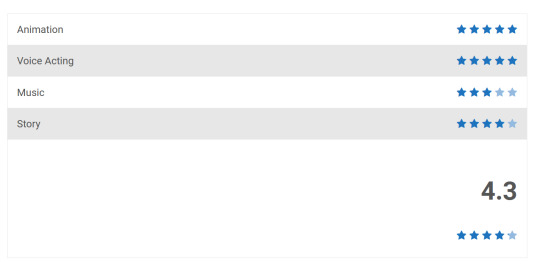
© 2023 Burkely Hermann. All rights reserved.
#lower decks#st lower decks#star trek lower decks#st ld#beckett mariner#carol freeman#star trek spoilers#bradward boimler#d'vana tendi#tendi#sam rutherford#boimford#marinler#lgbtq#pop culture#reviews#t'lyn x mariner#t'lyn#bisexual#pansexual#asexual#shipping#lwd spoilers#nick locarno#easter eggs#Youtube
3 notes
·
View notes
Text
Disneyland opens
Disneyland, Walt Disney’s metropolis of nostalgia, fantasy and futurism, opens on July 17, 1955. The $17 million theme park was built on 160 acres of former orange groves in Anaheim, California, and soon brought in staggering profits. Today, Disneyland hosts more than 18 million visitors a year, who spend close to $3 billion.
Walt Disney, born in Chicago in 1901, worked as a commercial artist before setting up a small studio in Los Angeles to produce animated cartoons. In 1928, his short film Steamboat Willy, starring the character “Mickey Mouse,” was a national sensation. It was the first animated film to use sound, and Disney provided the voice for Mickey. From there on, Disney cartoons were in heavy demand, but the company struggled financially because of Disney’s insistence on ever-improving artistic and technical quality. His first feature-length cartoon, Snow White and the Seven Dwarfs (1938), took three years to complete and was a great commercial success.
Snow White was followed by other feature-length classics for children, such as Pinocchio (1940), Dumbo (1941), and Bambi (1942). Fantasia (1940), which coordinated animated segments with famous classical music pieces, was an artistic and technical achievement. In Song of the South (1946), Disney combined live actors with animated figures, and beginning with Treasure Island in 1950 the company added live-action movies to its repertoire. Disney was also one of the first movie studios to produce film directly for television, and its Zorro and Davy Crockett series were very popular with children.
In the early 1950s, Walt Disney began designing a huge amusement park to be built near Los Angeles. He intended Disneyland to have educational as well as amusement value and to entertain adults and their children. Land was bought in the farming community of Anaheim, about 25 miles southeast of Los Angeles, and construction began in 1954. In the summer of 1955, special invitations were sent out for the opening of Disneyland on July 17. Unfortunately, the pass was counterfeited and thousands of uninvited people were admitted into Disneyland on opening day. The park was not ready for the public: food and drink ran out, a women’s high-heel shoe got stuck in the wet asphalt of Main Street USA, and the Mark Twain Steamboat nearly capsized from too many passengers.
Disneyland soon recovered, however, and attractions such as the Castle, Mr. Toad’s Wild Ride, Snow White’s Adventures, Space Station X-1, Jungle Cruise, and Stage Coach drew countless children and their parents. Special events and the continual building of new state-of-the-art attractions encouraged them to visit again. In 1965, work began on an even bigger Disney theme park and resort near Orlando, Florida. Walt Disney died in 1966, and Walt Disney World was opened in his honor on October 1, 1971. Epcot Center, Disney-MGM Studios, and Animal Kingdom were later added to Walt Disney World, and it remains Florida’s premier tourist attraction. In 1983, Disneyland Tokyo opened in Japan, and in 1992 Disneyland Paris—or “EuroDisney”—opened in Marne-la-Vallee. Disneyland in Hong Kong opened its doors in September 2005.
2 notes
·
View notes
Text
Parallel Worlds: Frank Mayo Biography
。⋆。˚☽˚。⋆.focused on His Bond With His Mother。⋆。˚☽˚。⋆.

Left - David Carroll, "The Matinee Idols," 1972, p.47 Right - Photoplay, May 1920
Frank Mayo's grandfather Frank Maguire Mayo was one of the pioneers in American theatrical circles. He "created the virile, wholesome, tenderly humorous role of Davy Crockett, hunter and woodsman in the never-to-be-forgotten play. Later he repeated his former success in 'Pudd'nhead Wilson,' the play dramatized from Mark Twain's famous book by the same name."(*Motion Picture Magazine, Jan 1919) He had one son named Edwin and two daughters named Eleanor and Deronda. Edwin Mayo had divorced his first wife Jennie Bartine in Sep 2, 1886, and later he married an actress, Frances Graham(e) in Sep 12, 1888.
Her off stage name was Frances Johnstone. Parents of Frances Johnstone, George Lorimer Johnstone and Frances Hoy married in Ohio in December, 1857.


Their son George Lorimer, Jr. was born in Ohio in November 2, 1859.
Their daughter Alice was born in Ohio in 1861.
Their daughter Frances was born in Newport, Kentucky in March 9, 1865.
Their son Paul Menifee was born in Newport, Kentucky in July 7, 1867.
Their daughter Kathrine Mary was born in Newport, Kentucky in January 21, 1870.
These five children are shown with their father George Lorimer Johnstone, Sr. and an adult woman named Anna in Campbell, Kentucky Census of August 6, 1870.
George Lorimer Johnstone, Sr., who was an operator of a Mississippi steamboat line, died in New Port, Kentucky in October, 1870. And then, these five children are shown with their mother Frances Hoy in New York, New York Census of December 23, 1870.

Frank Lorimer Mayo was born in 28 June, 1889. He was the only child of Edwin Mayo and Frances Johnstone. Lormy made his stage debut as a child in his grandfather's company. One of the earliest articles to name Frank Mayo III was from May 20, 1892. It says, "Three generations of Mayos, Frank, his son Edwin and grandson Master Leon appeared in Davy Crockett last Saturday night."(*Crawfordsville Star, Crawfordsville, Indiana, May 20, 1892) And Lormy was the only grandson born during Frank Maguire Mayo's living years.
His birth year was misreported as 1886 during his screen stardom years but his birth year which was written in official documents is 1889 and he also requested that correct his birth year which is misreported.(*Motion Picture Classic, Dec 1921)

Lormy is requesting that correct his birth year(his age) which is misreported. (Marion Lake, "The Third Generation," Motion Picture Classic, Dec 1921)

When Lormy was 6 year old, he was playing with grease-paint and was smearing all over his face with it, only to be caught by a property man. He grabbed Lormy by the back of his neck and threw him on the stage. In his role, he had to enter rubbing his eyes as if he had been asleep, and, when he dropped his hands, his grandfather took one look at Lormy's face and whispered, 'Get off this stage!' At the end of the act his grandfather came back to the wings, where Lormy sat huddled in his mother's arms, and told him that he is fired. This started Lormy's sobs, and he asked mother if we really would starve now he was fired. But next day, he was re-engaged.(*Motion Picture Magazine, Sep 1920)
Later, when Lormy became an motion picture actor in the United States, he was asked, what your grandfather and your father would have thought of motion picture as an art. he replied, "I fear grandfather would never have considered them seriously, for he was too much of the old school to welcome such a radical step. But I'm sure father would have welcomed them as a marvelous means of perpetuating the work of great actors."(*Motion Picture Magazine, Sep 1920)
Lormy continued to work as an actor until his grandfather died June 8, 1896. Lormy was on the train with him when he died.(*Moving Picture World, 1 Jan 1916 / Motion Picture Classic, Dec 1921)

Lormy was placed in a military school in Peekskill, New York.(*Motion Picture Magazine, Sep 1920) 2 years ago, in July 1894, Paul Menifee Johnstone had married Belle Stoddard (even though Lormy thought that Belle Stoddard married after Frank Maguire Mayo's death), and Stoddard retired from the stage. She took Lormy who was in Peekskill military school to her home and raised him with her daughters. Lormy remembered that Belle Stoddard is “like a mother to me than aunt.” He said, "At the time I was sent to school at Peekskill my mother and father were both on the road(...) So I was left in my aunt's care for many years. Whenever my parents played in any city near New York my aunt would take me to visit them, and always on Christmas and at Easter time we would join my father and mother wherever they happened to be."(*The Canaseraga Times, Canaseraga, New York, Oct 1, 1920) Lormy said Belle Stoddard had been "a real good sport" to him.(*Picturegoer, Dec 1921)
Later, his father died February 18, 1900. Lormy claimed that after his father's death, he and his mother clung to each other in their grief and spent several years traveling thru Europe and later settled in Liverpool.(*Motion Picture Magazine, Sep 1920) But actually his mother remarried in May 25, 1903, to an English purser named Henry Butler Hardrige Palmer in Manhattan, New York City. Then it makes perfect sense that the three of them ended up living in the England. But Lormy never said about his mother's remarriage to American press.
In May 3, 1906, a boy named William Spencer Palmer was born to Henry Butler Hardrige Palmer and Frances Johnstone in Rock Ferry, Cheshire. He was baptized on February 24, 1907, in Bebington, where Bebington College, where his half brother Lormy attended(*Motion Picture Magazine, Sep 1920), was located.
In England(*Photoplay, Apr 1917), Frank Mayo married an blue-eyed, auburn-haired English woman named Joyce Eleanor Moore. She was born in March 6, 1894.

Meanwhile, George Lorimer Johnstone, Jr., who worked as a producer at the Santa Barbara Film Company(=American Film Manufacturing Company), invited Lormy to join him, so Lormy left his mother in England for the United States to join his uncle.(*Motion Picture Magazine, Sep 1920)

(Passenger list of SS Adriatic had sailed from Liverpool in June 25, 1914, and arrived at port of New York City in July 3, 1914. This record shows Frank and Joyce Mayo as a married couple and it means they were married before June 25, 1914. / Family Search)
In terms of his early career, Lormy worked first at American Film Manufacturing Company, then at Selig.

(Group photo of Balboa Players at a ball at the Hotel Virginia: The Moving Picture World, 4 March 1916 Bottom right-hand photo: Photo of Mrs. Joyce Moore Mayo. Her passport application, 1920 / Family Search)
And then, he and his wife Joyce Eleanor Moore worked at Balboa during 1915-17. At Balboa, his frequent leading lady was Ruth Roland.

During his very early film career, he unintentionally rode on his grandfather's coattails. One article said, "His grandfather, Frank Mayo, one of the foremost American actors of a generation ago, is still remembered for his sterling characterizations in 'Davy Crockett' and 'Puddin' Head Wilson.' Although American born, Americans do not know much of this young man, for the greater part of his professional life has been spent abroad."(*Moving Picture World, 1 Jan 1916)
Lormy was likely signed with World in 1918. At World, He was usually portrayed as villain characters and often co-starred with June Elvidge.
Since about 1919, Lormy started to work for Universal. One article described the Universal films starring Frank Mayo as "Universal features full of punch and punches."(*Pictures and Picturegoer, Feb 1924) At Universal, Lormy was usually cast in the 'fighting Romeo' roles. He said that the reason of the success of Universal film The Brute Breaker (1919) is because there was a climatic fight in it. He said, "I should like to have a chance to show the public that I can at least try to do something else than fight. I do not care about playing society-man types. Pretty boys are out of my line. I wouldn't play a pretty-boy part because I hate the type."(*Pantomime, Feb 25, 1922)
Meanwhile, in 1919, Lormy and his wife Joyce are separated. One article describes Joyce Moore's conjugal pastime was throwing lamps at her husband.(*Motion Picture Magazine, January 1922)

In 1920, Joyce Moore charged Dagmar Godowsky, a co-star of her husband and a daughter of famous pianist Leopold Godowsky, with being the home-breaker.(*Photoplay, May 1920) It is said that Frank Mayo sued Joyce Moore for a divorce on the grounds of desertion(*Photoplay, January 1922) after Joyce had dropped her second suit for separate maintenance she filed against him.(*Motion Picture Magazine, November 1920)
In 1921, Frank Mayo received interlocutory decree of divorce. Three (or four) days later, on October 1, 1921, he married Dagmar Godowsky in Tia Juana, Mexico, because California laws require a divorced person to wait one year before marrying again. In other words, he married Dagmar before his divorce decree became final. Like Rudolph Valentino, Henry Walthall, he was investigated for bigamy. Unlike the general press, movie magazines incorrectly reported that Frank Mayo had married Dagmar after his divorce was finalized, which gave Mayo and Dagmar's marriage considerable support. The disgrace was that his picture appeared in the newspaper next to Henry Walthall's photo while he was investigated for bigamy, and the problem was that Lormy had no reason to flee to another country and marry whereas Henry Walthall had reason to flee to another state and marry(his mistress, Mary Charleson, had already given birth to his baby eight months earlier), so unlike Henry Walthall's marriage, Lormy's marriage could only be seen as bigamy no matter how they look at it. It must have left a huge stain on his career.
”Often, when the subject of Mrs. Mayo's career is broached, there is a friendly argument between husband and wife, for Frank wishes her to be content as the wife of a man who adores her."(*Pantomime, Feb 25, 1922) In response to Dagmar Godowsky's question, “But Frank, do married women have no rights? Must I sit at home just because I am your wife?” Lormy is said to have replied, “You must.”(*Pantomime, Feb 25, 1922) He once said, "I don't believe a woman should work after she is married.(*Photoplay, June 1922) I personally think that home life is happier for a woman's remaining in the home and making a career of domestic life; yet I sympathize with my wife's ambitions, and I know we shall continue to be happy no matter what happens."(*Picture-Play, April 1922) His idealized image of a woman seems to reflect Belle Stoddard Johnstone rather than his mother.
I don't know exactly when it happened, but Joyce Moore has attempted to have the decree of divorce set aside; and has come all the way from Paris, where she appeared in a revue, to do it. Joyce said that she was not notified of the divorce proceedings while Lormy saying that she was. (*Photoplay, Jan 1923)
Meanwhile, Lormy's stepfather Henry Butler Hardrige Palmer died in November 4, 1922.

(Passenger list of SS Baltic which left Liverpool on September 29, 1923. This record shows Frances Johnstone Palmer and her son W.S. Palmer together. / Family Search)

(SS Baltic arrived in New York City on October 9, 1923. W.S. Palmer's naturalization record of 1943 / Family Search)
In 1923, Frances Johnstone moved to United States from England with her son William Spencer Palmer.
There wasn't enough insistent demand for Frank Mayo to warrant owner of Universal Pictures, Carl Laemmle's giving him a raise and retaining his service.(*Screenland, Feb 1924) Lormy left Universal. He seems to have signed with Goldwyn around January, 1923. "Out of Universal, Mayo sold his services to Goldwyn for several times the amount he received at Universal City. But he didn't sign as a star; he signed as a supporting player. In other words, Goldwyn considers Frank Mayo several times more valuable to have around the studio than did Universal."(*Screenland, Feb 1924) His career took a downward spiral at least since 1925.

In 1925, one article reported that "Here it is almost the season for brides and not a single film star has announced her engagement. More of them seem to be contemplating divorce. Dagmar Godowsky is getting one from Frank Mayo but it seems to be that the papers have been full of that for years."(*Picture-Play, Jun 1925) The event that cemented Dagmar Godowsky's decision to divorce was her husband's involvement with Anna Luther.
"Anna Luther was a Keystone-Triangle leading lady during 1915-16, who left for Foxfilm comedies and feature films in the 1920s."(*Brent E. Walker, Mack Sennett's Fun Factory, p.591) Dagmar Godowsky named Anna Luther as co-respondent in a suit brought against Frank Mayo in March 1925. Dagmar Godowsky discovered her husband with Anna Luther in his apartment. She claimed that her husband was wearing only a bathrobe.
When Dagmar said, “Now I can get my divorce.”, Frank Mayo reportedly said, “But why bother about that?” Dagmar then said, “You and I were never legally married and so the courts have nothing to say about parting us.”(*The Troy Sunday Budget, Troy, New York, Jul 12, 1925)
Meanwhile, Anna Luther claimed that she had been friends with Frank Mayo since the days when she was still at Keystone Studios and was merely comforting Mayo, who was suffering from a headache. "It looks pretty funny to me, Don't forget that Dagmar herself was the co-respondent in Frank Mayo's first divorce suit," unashamed but witty Anna Luther said.
In the same year, 1925, Frank Mayo applied for $2500 attorney fees to permit Joyce Moore to appear in connection with a suit between them over a property settlement that they had entered into in 1923. Joyce Moore was said to be in England and without means to come to America and appear in the suit over the contract under which Frank Mayo was to pay her $150 a week alimony. Joyce Moore also filed a motion after the interlocutory decree was entered, asking her default be set aside on the ground that she had been unable to come to America and fight the divorce suit. She was said to have been working at the time in Paris, France, as a chorus girl at a salary of $25 a week. During the arguments in the new case it developed that a final decree of divorce had never been entered.(*Photoplay, January 1925) This is what made marriage between Mayo and Godowsky was annulled.
However, I think that only movie fans were unaware that their divorce was not yet final but the parties (Frank Mayo and Joyce Moore) were aware of that. (There were reports in the general press outside of movie magazines that Frank Mayo's marriage was being investigated for bigamy.)
In May 29, 1925, He is granted a final decree of divorce from Joyce Moore.
An article about the preview of the 1927 film Ragtime, directed by Scott Pembroke, reveals that the hostess of the preview was Joyce Moore. The article describes Joyce Moore as “Mrs. Frank Mayo” and “known in stage and screen circles as Joyce Mayo”.(*Moving Picture World, 27 Aug 1927)
In August 25, 1928, Frank Mayo married vaudeville performer Margaret Louise Shorey. The wedding took place in Lynchburg, Virginia, where the two were filling a stage engagement.(*Picture-Play, Jul 1929)
Meanwhile, Although Lormy's mother Frances returned to the United States after her husband's death, Lormy and his mother lived in separate parallel worlds.
According to United States Census, 1930, Frances Johnstone lives with her son William Spencer in New Jersey while Lormy living with his wife Margaret Shorey in Los Angeles, California.
According to United States Census, 1940, Frances Johnstone lives with her son William Spencer and her sister Kathrine Mary Johnstone in New York City while Lormy living with his wife Margaret Shorey in Los Angeles, California.

(William Spencer Palmer's WW2 draft registration / Family Search)

(Frank Mayo's WW2 draft registration / Family Search)
Most notable records showing these two parallel worlds are World War 2 draft registrations of Lormy and his half brother William Spencer. Lormy wrote the name of (Isa)belle Stoddard Johnstone, wife of late Paul Menifee Johnstone, on the space 'Name and address of person who will always know your address' while William Spencer wrote the name of his mother on that space.
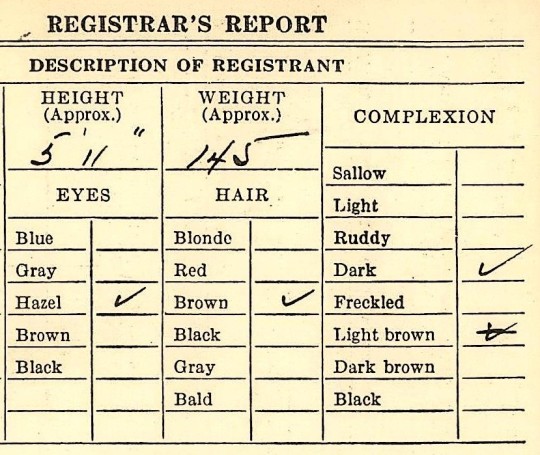
(W.S. Palmer's personal description. World War 2 draft registration in 1940 (aged 34) / Family Search)

(W.S. Palmer's personal description. Naturalization record in 1943 (aged 37) / Family Search)
William Spencer Palmer married an American woman named Elizabeth Sherwood in June 27, 1941, and he became naturalized in the United States in 1943. Their daughter Frances P. Palmer was born in New York in 1945.
Frances Johnstone' sister Kathrine Mary Johnstone died in February 23, 1947.

(United States Census, 1950 showing W.S. Palmer, his wife Elizabeth, his daughter Frances and his mother Frances together. / Family Search)
According to United States Census, 1950, Frances Johnstone lives with her son William Spencer, his wife Elizabeth, and his daughter Frances in New Jersey while Lormy living with his wife Evelyn in Los Angeles, California. Back then, William Spencer Palmer was a proprietor of Jewelry accessory firm.
#frank mayo#frank lorimer mayo#frank mayo biography written by me#my writings about lormy#frank maguire mayo#edwin mayo#george lorimer johnstone#george lorimer johnstone sr#frances hoy#george lorimer johnstone jr#alice johnstone#frances johnstone#paul menifee johnstone#kathrine mary johnstone#belle stoddard#joyce moore#joyce eleanor moore#dagmar godowsky#margaret louise shorey#margaret shorey#henry butler hardrige palmer#william spencer palmer#elizabeth palmer#elizabeth sherwood#frances palmer
0 notes
Text
Parallel Worlds: Frank Mayo Biography
。⋆。˚☽˚。⋆.focused on His Bond With His Mother。⋆。˚☽˚。⋆.

Left - David Carroll, "The Matinee Idols," 1972, p.47 Right - Photoplay, May 1920
Frank Mayo's grandfather Frank Maguire Mayo was one of the pioneers in American theatrical circles. He "created the virile, wholesome, tenderly humorous role of Davy Crockett, hunter and woodsman in the never-to-be-forgotten play. Later he repeated his former success in 'Pudd'nhead Wilson,' the play dramatized from Mark Twain's famous book by the same name."(*Motion Picture Magazine, Jan 1919) He had one son named Edwin and two daughters named Eleanor and Deronda. Edwin Mayo had divorced his first wife Jennie Bartine in Sep 2, 1886, and later he married an actress, Frances Graham(e) in Sep 12, 1888.
Her off stage name was Frances Johnstone. Parents of Frances Johnstone, George Lorimer Johnstone and Frances Hoy married in Ohio in December, 1857.


Their son George Lorimer, Jr. was born in Ohio in November 2, 1859.
Their daughter Alice was born in Ohio in 1861.
Their daughter Frances was born in Newport, Kentucky in March 9, 1865.
Their son Paul Menifee was born in Newport, Kentucky in July 7, 1867.
Their daughter Kathrine Mary was born in Newport, Kentucky in January 21, 1870.
These five children are shown with their father George Lorimer Johnstone, Sr. and an adult woman named Anna in Campbell, Kentucky Census of August 6, 1870.
George Lorimer Johnstone, Sr., who was an operator of a Mississippi steamboat line, died in New Port, Kentucky in October, 1870. And then, these five children are shown with their mother Frances Hoy in New York, New York Census of December 23, 1870.

Frank Lorimer Mayo was born in 28 June, 1889. He was the only child of Edwin Mayo and Frances Johnstone. Lormy made his stage debut as a child in his grandfather's company. One of the earliest articles to name Frank Mayo III was from May 20, 1892. It says, "Three generations of Mayos, Frank, his son Edwin and grandson Master Leon appeared in Davy Crockett last Saturday night."(*Crawfordsville Star, Crawfordsville, Indiana, May 20, 1892) And Lormy was the only grandson born during Frank Maguire Mayo's living years.
His birth year was misreported as 1886 during his screen stardom years but his birth year which was written in official documents is 1889 and he also requested that correct his birth year which is misreported.(*Motion Picture Classic, Dec 1921)

Lormy is requesting that correct his birth year(his age) which is misreported. (Marion Lake, "The Third Generation," Motion Picture Classic, Dec 1921)

When Lormy was 6 year old, he was playing with grease-paint and was smearing all over his face with it, only to be caught by a property man. He grabbed Lormy by the back of his neck and threw him on the stage. In his role, he had to enter rubbing his eyes as if he had been asleep, and, when he dropped his hands, his grandfather took one look at Lormy's face and whispered, 'Get off this stage!' At the end of the act his grandfather came back to the wings, where Lormy sat huddled in his mother's arms, and told him that he is fired. This started Lormy's sobs, and he asked mother if we really would starve now he was fired. But next day, he was re-engaged.(*Motion Picture Magazine, Sep 1920)
Later, when Lormy became an motion picture actor in the United States, he was asked, what your grandfather and your father would have thought of motion picture as an art. he replied, "I fear grandfather would never have considered them seriously, for he was too much of the old school to welcome such a radical step. But I'm sure father would have welcomed them as a marvelous means of perpetuating the work of great actors."(*Motion Picture Magazine, Sep 1920)
Lormy continued to work as an actor until his grandfather died June 8, 1896. Lormy was on the train with him when he died.(*Moving Picture World, 1 Jan 1916 / Motion Picture Classic, Dec 1921)

Lormy was placed in a military school in Peekskill, New York.(*Motion Picture Magazine, Sep 1920) 2 years ago, in July 1894, Paul Menifee Johnstone had married Belle Stoddard (even though Lormy thought that Belle Stoddard married after Frank Maguire Mayo's death), and Stoddard retired from the stage. She took Lormy who was in Peekskill military school to her home and raised him with her daughters. Lormy remembered that Belle Stoddard is “like a mother to me than aunt.” He said, "At the time I was sent to school at Peekskill my mother and father were both on the road(...) So I was left in my aunt's care for many years. Whenever my parents played in any city near New York my aunt would take me to visit them, and always on Christmas and at Easter time we would join my father and mother wherever they happened to be."(*The Canaseraga Times, Canaseraga, New York, Oct 1, 1920) Lormy said Belle Stoddard had been "a real good sport" to him.(*Picturegoer, Dec 1921)
Later, his father died February 18, 1900. Lormy claimed that after his father's death, he and his mother clung to each other in their grief and spent several years traveling thru Europe and later settled in Liverpool.(*Motion Picture Magazine, Sep 1920) But actually his mother remarried in May 25, 1903, to an English purser named Henry Butler Hardrige Palmer in Manhattan, New York City. Then it makes perfect sense that the three of them ended up living in the England. But Lormy never said about his mother's remarriage to American press.
In May 3, 1906, a boy named William Spencer Palmer was born to Henry Butler Hardrige Palmer and Frances Johnstone in Rock Ferry, Cheshire. He was baptized on February 24, 1907, in Bebington, where Bebington College, where his half brother Lormy attended(*Motion Picture Magazine, Sep 1920), was located.
In England(*Photoplay, Apr 1917), Frank Mayo married an blue-eyed, auburn-haired English woman named Joyce Eleanor Moore. She was born in March 6, 1894.

Meanwhile, George Lorimer Johnstone, Jr., who worked as a producer at the Santa Barbara Film Company(=American Film Manufacturing Company), invited Lormy to join him, so Lormy left his mother in England for the United States to join his uncle.(*Motion Picture Magazine, Sep 1920)

(Passenger list of SS Adriatic had sailed from Liverpool in June 25, 1914, and arrived at port of New York City in July 3, 1914. This record shows Frank and Joyce Mayo as a married couple and it means they were married before June 25, 1914. / Family Search)
In terms of his early career, Lormy worked first at American Film Manufacturing Company, then at Selig.

(Group photo of Balboa Players at a ball at the Hotel Virginia: The Moving Picture World, 4 March 1916 Bottom right-hand photo: Photo of Mrs. Joyce Moore Mayo. Her passport application, 1920 / Family Search)
And then, he and his wife Joyce Eleanor Moore worked at Balboa during 1915-17. At Balboa, his frequent leading lady was Ruth Roland.

During his very early film career, he unintentionally rode on his grandfather's coattails. One article said, "His grandfather, Frank Mayo, one of the foremost American actors of a generation ago, is still remembered for his sterling characterizations in 'Davy Crockett' and 'Puddin' Head Wilson.' Although American born, Americans do not know much of this young man, for the greater part of his professional life has been spent abroad."(*Moving Picture World, 1 Jan 1916)
Lormy was likely signed with World in 1918. At World, He was usually portrayed as villain characters and often co-starred with June Elvidge.
Since about 1919, Lormy started to work for Universal. One article described the Universal films starring Frank Mayo as "Universal features full of punch and punches."(*Pictures and Picturegoer, Feb 1924) At Universal, Lormy was usually cast in the 'fighting Romeo' roles. He said that the reason of the success of Universal film The Brute Breaker (1919) is because there was a climatic fight in it. He said, "I should like to have a chance to show the public that I can at least try to do something else than fight. I do not care about playing society-man types. Pretty boys are out of my line. I wouldn't play a pretty-boy part because I hate the type."(*Pantomime, Feb 25, 1922)
Meanwhile, in 1919, Lormy and his wife Joyce are separated. One article describes Joyce Moore's conjugal pastime was throwing lamps at her husband.(*Motion Picture Magazine, January 1922)

In 1920, Joyce Moore charged Dagmar Godowsky, a co-star of her husband and a daughter of famous pianist Leopold Godowsky, with being the home-breaker.(*Photoplay, May 1920) It is said that Frank Mayo sued Joyce Moore for a divorce on the grounds of desertion(*Photoplay, January 1922) after Joyce had dropped her second suit for separate maintenance she filed against him.(*Motion Picture Magazine, November 1920)
In 1921, Frank Mayo received interlocutory decree of divorce. Three (or four) days later, on October 1, 1921, he married Dagmar Godowsky in Tia Juana, Mexico, because California laws require a divorced person to wait one year before marrying again. In other words, he married Dagmar before his divorce decree became final. Like Rudolph Valentino, Henry Walthall, he was investigated for bigamy. Unlike the general press, movie magazines incorrectly reported that Frank Mayo had married Dagmar after his divorce was finalized, which gave Mayo and Dagmar's marriage considerable support. The disgrace was that his picture appeared in the newspaper next to Henry Walthall's photo while he was investigated for bigamy, and the problem was that Lormy had no reason to flee to another country and marry whereas Henry Walthall had reason to flee to another state and marry(his mistress, Mary Charleson, had already given birth to his baby eight months earlier), so unlike Henry Walthall's marriage, Lormy's marriage could only be seen as bigamy no matter how they look at it. It must have left a huge stain on his career.
”Often, when the subject of Mrs. Mayo's career is broached, there is a friendly argument between husband and wife, for Frank wishes her to be content as the wife of a man who adores her."(*Pantomime, Feb 25, 1922) In response to Dagmar Godowsky's question, “But Frank, do married women have no rights? Must I sit at home just because I am your wife?” Lormy is said to have replied, “You must.”(*Pantomime, Feb 25, 1922) He once said, "I don't believe a woman should work after she is married.(*Photoplay, June 1922) I personally think that home life is happier for a woman's remaining in the home and making a career of domestic life; yet I sympathize with my wife's ambitions, and I know we shall continue to be happy no matter what happens."(*Picture-Play, April 1922) His idealized image of a woman seems to reflect Belle Stoddard Johnstone rather than his mother.
I don't know exactly when it happened, but Joyce Moore has attempted to have the decree of divorce set aside; and has come all the way from Paris, where she appeared in a revue, to do it. Joyce said that she was not notified of the divorce proceedings while Lormy saying that she was. (*Photoplay, Jan 1923)
Meanwhile, Lormy's stepfather Henry Butler Hardrige Palmer died in November 4, 1922.

(Passenger list of SS Baltic which left Liverpool on September 29, 1923. This record shows Frances Johnstone Palmer and her son W.S. Palmer together. / Family Search)

(SS Baltic arrived in New York City on October 9, 1923. W.S. Palmer's naturalization record of 1943 / Family Search)
In 1923, Frances Johnstone moved to United States from England with her son William Spencer Palmer.
There wasn't enough insistent demand for Frank Mayo to warrant owner of Universal Pictures, Carl Laemmle's giving him a raise and retaining his service.(*Screenland, Feb 1924) Lormy left Universal. He seems to have signed with Goldwyn around January, 1923. "Out of Universal, Mayo sold his services to Goldwyn for several times the amount he received at Universal City. But he didn't sign as a star; he signed as a supporting player. In other words, Goldwyn considers Frank Mayo several times more valuable to have around the studio than did Universal."(*Screenland, Feb 1924) His career took a downward spiral at least since 1925.

In 1925, one article reported that "Here it is almost the season for brides and not a single film star has announced her engagement. More of them seem to be contemplating divorce. Dagmar Godowsky is getting one from Frank Mayo but it seems to be that the papers have been full of that for years."(*Picture-Play, Jun 1925) The event that cemented Dagmar Godowsky's decision to divorce was her husband's involvement with Anna Luther.
"Anna Luther was a Keystone-Triangle leading lady during 1915-16, who left for Foxfilm comedies and feature films in the 1920s."(*Brent E. Walker, Mack Sennett's Fun Factory, p.591) Dagmar Godowsky named Anna Luther as co-respondent in a suit brought against Frank Mayo in March 1925. Dagmar Godowsky discovered her husband with Anna Luther in his apartment. She claimed that her husband was wearing only a bathrobe.
When Dagmar said, “Now I can get my divorce.”, Frank Mayo reportedly said, “But why bother about that?” Dagmar then said, “You and I were never legally married and so the courts have nothing to say about parting us.”(*The Troy Sunday Budget, Troy, New York, Jul 12, 1925)
Meanwhile, Anna Luther claimed that she had been friends with Frank Mayo since the days when she was still at Keystone Studios and was merely comforting Mayo, who was suffering from a headache. "It looks pretty funny to me, Don't forget that Dagmar herself was the co-respondent in Frank Mayo's first divorce suit," unashamed but witty Anna Luther said.
In the same year, 1925, Frank Mayo applied for $2500 attorney fees to permit Joyce Moore to appear in connection with a suit between them over a property settlement that they had entered into in 1923. Joyce Moore was said to be in England and without means to come to America and appear in the suit over the contract under which Frank Mayo was to pay her $150 a week alimony. Joyce Moore also filed a motion after the interlocutory decree was entered, asking her default be set aside on the ground that she had been unable to come to America and fight the divorce suit. She was said to have been working at the time in Paris, France, as a chorus girl at a salary of $25 a week. During the arguments in the new case it developed that a final decree of divorce had never been entered.(*Photoplay, January 1925) This is what made marriage between Mayo and Godowsky was annulled.
However, I think that only movie fans were unaware that their divorce was not yet final but the parties (Frank Mayo and Joyce Moore) were aware of that. (There were reports in the general press outside of movie magazines that Frank Mayo's marriage was being investigated for bigamy.)
In May 29, 1925, He is granted a final decree of divorce from Joyce Moore.
An article about the preview of the 1927 film Ragtime, directed by Scott Pembroke, reveals that the hostess of the preview was Joyce Moore. The article describes Joyce Moore as “Mrs. Frank Mayo” and “known in stage and screen circles as Joyce Mayo”.(*Moving Picture World, 27 Aug 1927)
In August 25, 1928, Frank Mayo married vaudeville performer Margaret Louise Shorey. The wedding took place in Lynchburg, Virginia, where the two were filling a stage engagement.(*Picture-Play, Jul 1929)
Meanwhile, Although Lormy's mother Frances returned to the United States after her husband's death, Lormy and his mother lived in separate parallel worlds.
According to United States Census, 1930, Frances Johnstone lives with her son William Spencer in New Jersey while Lormy living with his wife Margaret Shorey in Los Angeles, California.
According to United States Census, 1940, Frances Johnstone lives with her son William Spencer and her sister Kathrine Mary Johnstone in New York City while Lormy living with his wife Margaret Shorey in Los Angeles, California.

(William Spencer Palmer's WW2 draft registration / Family Search)

(Frank Mayo's WW2 draft registration / Family Search)
Most notable records showing these two parallel worlds are World War 2 draft registrations of Lormy and his half brother William Spencer. Lormy wrote the name of (Isa)belle Stoddard Johnstone, wife of late Paul Menifee Johnstone, on the space 'Name and address of person who will always know your address' while William Spencer wrote the name of his mother on that space.

(W.S. Palmer's personal description. World War 2 draft registration in 1940 (aged 34) / Family Search)

(W.S. Palmer's personal description. Naturalization record in 1943 (aged 37) / Family Search)
William Spencer Palmer married an American woman named Elizabeth Sherwood in June 27, 1941, and he became naturalized in the United States in 1943. Their daughter Frances P. Palmer was born in New York in 1945.
Frances Johnstone' sister Kathrine Mary Johnstone died in February 23, 1947.

(United States Census, 1950 showing W.S. Palmer, his wife Elizabeth, his daughter Frances and his mother Frances together. / Family Search)
According to United States Census, 1950, Frances Johnstone lives with her son William Spencer, his wife Elizabeth, and his daughter Frances in New Jersey while Lormy living with his wife Evelyn in Los Angeles, California. Back then, William Spencer Palmer was a proprietor of Jewelry accessory firm.
#frank mayo#frank lorimer mayo#frank mayo biography written by me#my writings about lormy#frank maguire mayo#edwin mayo#george lorimer johnstone#george lorimer johnstone sr#frances hoy#george lorimer johnstone jr#alice johnstone#frances johnstone#paul menifee johnstone#kathrine mary johnstone#belle stoddard#joyce moore#joyce eleanor moore#dagmar godowsky#margaret louise shorey#margaret shorey#henry butler hardrige palmer#william spencer palmer#elizabeth palmer#elizabeth sherwood#frances palmer
0 notes
Text


Don’t Quote Him on That: Did Mark Twain Really Say This?
By Editor November 10, 2020
To this day, Mark Twain (1835–1910) remains the most frequently quoted American author. But there’s a caveat: many of the clever sayings commonly attributed to him were actually someone else’s.
In his lifetime, which began 184 years ago this past November, Twain had indeed voiced many opinions that reflected his sharp wit, intelligence, and an often quirky way of seeing the world. He was able to capture the American spirit of the era, and his wisdom was derived from his many varied activities, ranging from piloting a steamboat and prospecting for gold out West to traveling the world on a cruise liner (which led to his widely popular book, The Innocents Abroad). All these experiences inspired the sometimes biting, often funny, and always pertinent sayings—even the ones that he never claimed as his own.
This is an opportune moment to separate fact from fiction, which Twain, a one-time journalist, would have surely appreciated.
Here are just a few of the more famous quotations mistakenly ascribed to Twain:
“There are three kinds of lies: lies, damned lies, and statistics.” (In fact, Twain’s contemporary, British politician Leonard H. Courtney, said this.)
“Golf is a good walk spoiled.” It’s a great quote but, unfortunately, not Twain’s. It appears that American novelist Harry Leon Wilson said it in 1904.
“The coldest winter I ever saw was the summer day I spent in San Francisco.” There’s some debate about who this quote should be attributed to, but Twain never voiced this.
“Wagner’s music is better than it sounds.” Though Twain liked to use this quote, he credited it to a journalist and fellow humorist, Edgar Wilson Nye.
These are just a few of many quotations that have, over the years, been misidentified as Twain’s. But the fact remains that the author of such literary classics as The Adventures of Tom Sawyer and its sequel, The Adventures of Huckleberry Finn, really did have a fine sense of humor and delivered plenty of his own witty lines.
For instance, he DID say: “You can’t depend on your eyes if your imagination is out of focus.”
“Get a bicycle. You will not regret it—if you live.”
“All dentists talk while they work. They have inherited this from their professional ancestors, the barbers.”
And—perhaps the most pertinent one to this subject—It is my belief that nearly any invented quotation, played with confidence, stands a good chance to deceive.”
Twain really did have a clever way with words, even if—to paraphrase another American icon, baseball great Yogi Berra—he never actually said most of the things he allegedly did.
We can only imagine that this confusion over the quote attribution might have prompted Twain to voice an appropriately amusing remark, which we could, in good consciousness, attribute to him.
https://www.simplycharly.com/read/blog/dont-quote-mark-twain-really-say/
✍️ 📔 📙 📕 📗 📙✍️ 🗑 📬 📌 📘 📚 📖 📒
10 Things You Might Not Know About Mark Twain October 3, 2021
1. Mark Twain’s real name was Samuel Langhorne Clemens. He took his pen name in 1863. The reason for this particular choice may have been that the phrase “mark twain” was often used in navigation to measure water depth, and the theory is that he heard it during the four years he piloted steamboats on the Mississippi River.
2. Before becoming known primarily as a novelist, Twain was a newspaper reporter and a travel writer. He may have been the most widely traveled author of his era, having crossed over 300,000 miles at a time when international travel was a rarity.
3. His overseas trips inspired such bestselling books as Innocents Abroad, A Tramp Abroad, A Connecticut Yankee in King Arthur’s Court, and Roughing It.
4. While Twain’s primary purpose for traveling and writing books about his adventures was to make money, these experiences inspired him to make a living from writing novels.
5. Authors Eugene O’Neill and William Faulkner called Twain “the first truly American writer” and “the true father of American literature.”
6. Among Twain’s best-known and popular novels are The Adventures of Huckleberry Finn and The Adventures of Tom Sawyer.
7. Starting in 1885, the year Huckleberry Finn was released, it was banned from many libraries, schools, and bookstores because of its use of “coarse language,” as spoken by its uneducated protagonist. Some writers of that time, like Louisa May Alcott, criticized Twain’s language, while later authors defended Huckleberry Finn. Ernest Hemingway said, “All American writing comes from that. There was nothing before. There has been nothing as good since.”
8. To this day, the book remains controversial for its frequent use of the “n-word.” However, many school districts are now replacing the offensive language with alternative wording.
9. Although Twain has a reputation as a humorist (and many of his stories do have elements of humor), he also experienced dark moods sparked by the deaths of several family members, including his oldest child, Langdon, and brother, Henry.
10. Though an acclaimed writer, Twain did not have such luck in his business endeavors. His investments failed, resulting in a hefty debt.
https://www.simplycharly.com/learn/facts/10-things-you-might-not-know-about-mark-twain/
✍️ 📔 📙 📕 📗 📙✍️ 🗑 📬 📌 📘 📚 📖 📒
0 notes